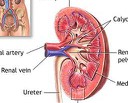What you need to know to be a Kidney Donor
Let’s see if I pass the tests and match up…..
Let’s see if I pass the tests and match up…..
What the heck does kidney donation/swaps have to do with investing. Well, all investing is an exchange just as a kidney swap is an exchange. This will be my biggest trade. 🙂
The writer will be donating a kidney to a person in dire need.
Three-minute Video on kidney donations and transplants:http://www.youtube.com/watch?v=gusncb4G2Hk
 So blogging will be intermittent until a transplant is done. The goal is to finish the section on Competition Demystified, then perhaps focus on valuation, especially how to value growth. But first, I will ask readers where they want to go next on the learning journey. I won’t forget to post on problems like LXK–but all in good time.
So blogging will be intermittent until a transplant is done. The goal is to finish the section on Competition Demystified, then perhaps focus on valuation, especially how to value growth. But first, I will ask readers where they want to go next on the learning journey. I won’t forget to post on problems like LXK–but all in good time.
Until then be rational, calm and reflective in these turbulent times.
More than one in three donations in the UK is now from a live donor[6] and almost one in three in Israel.[7] The percentage of transplants from living donors is increasing. Potential donors are carefully evaluated on medical and psychological grounds. This ensures that the donor is fit for surgery and has no disease which brings undue risk or likelihood of a poor outcome for either the donor or recipient. The psychological assessment is to ensure the donor gives informed consent and is not coerced. In countries where paying for organs is illegal, the authorities may also seek to ensure that a donation has not resulted from a financial transaction. In the UK, the Human Tissue Act 2004 (HTA) dictated that donors must prove a familiar or long-term relationship or enduring friendship, for instance by providing photographs of themselves together spread over a period of time or a birth or wedding certificate. Purely altruistic donation to strangers has recently been accepted by the Human Tissue Authority in the United Kingdom, but as of December 2007 only four people had been given permission to do this under the HTA. The decision must be approved by a panel, whereas the typical donation based on relationship is required only to go through an executive.[8] There is good evidence that kidney donation is not associated with long-term harm to the donor.[9] In some cases of male living donors a hydrocele may occur in the scrotum related to the side of the nephrectomy. As an example, a living donor who had a left side laproscopic nephrectomy, the left side of the scrotum can develop a hydrocele that envelopes the left testicle and enlargens the left side of the scrotum. This condition is typically non threatening and can disappear over time. So called “daisy chain” transplants in the US involve one altruistic donor who donates a kidney to someone who has a family member willing to donate, who isn’t a match. That family member then donates to a recipient who is a match. This “chain” can be continued with several more pairs of donors/recipients.[10]
Traditionally, the donor procedure has been through a single incision of 4–7 inches (10–18 cm), but live donation is being increasingly performed by laparoscopic surgery. This reduces pain and accelerates recovery for the donor. Operative time and complications decreased significantly after a surgeon performed 150 cases. Live donor kidney grafts have higher long-term success rates than those from deceased donors.[11] Since the increase in the use of laparoscopic surgery, the number of live donors has increased. Any advance which leads to a decrease in pain and scarring and swifter recovery has the potential to boost donor numbers. In January 2009, the first all-robotic kidney transplant was performed at Saint Barnabas Medical Center through a two-inch incision. In the following six months, the same team performed eight more robotic-assisted transplants.[12]
In 2004 the FDA approved the Cedars-Sinai High Dose IVIG therapy which reduces the need for the living donor to be the same blood type (ABO compatible) or even a tissue match.[13][14] The therapy reduced the incidence of the recipient’s immune system rejecting the donated kidney in highly sensitized patients.[14]
In 2009 at the Johns Hopkins Medical Center, a healthy kidney was removed through the donor’s vagina. Vaginal donations promise to speed recovery and reduce scarring.[15] The first donor was chosen as she had previously had a hysterectomy.[16] The extraction was performed using natural orifice transluminal endoscopic surgery, where an endoscope is inserted through an orifice, then through an internal incision, so that there is no external scar. The recent advance of single port laparoscopy requiring only one entry point at the navel is another advance with potential for more frequent use.
In the developing world some people sell their organs. Such people are often in grave poverty[17] or are exploited by salespersons. The people who travel to make use of these kidneys are often known as “transplant tourists.” This practice is opposed by a variety of human rights groups, including Organs Watch, a group established by medical anthropologists, which was instrumental in exposing illegal international organ selling rings. These patients may have increased complications owing to poor infection control and lower medical and surgical standards. One surgeon has said that organ trade could be legalized in the UK to prevent such tourism, but this is not seen by the National Kidney Research Fund as the answer to a deficit in donors.[18]